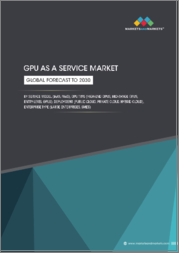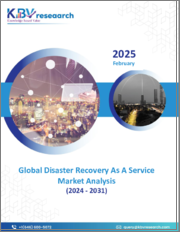
|
시장보고서
상품코드
1354225
운명 공동체로 가는 책임 공유 모델의 진화Evolution of the Shared Responsibility Model to Shared Fate |
||||||
이 IDC 전망은 책임 공유 모델(SRM)에서 운명 공유 모델로의 진화를 검토합니다. IDC가 현재 SRM의 세 번째 물결로 간주하는 운명 공동체 또는 운명 공동체라고 불리는 이 진화한 SRM은 클라우드 서비스 제공업체(SP)가 SRM에서 자신의 역할을 보장하고 계속할 뿐만 아니라 조직이 자신의 역할을 수행할 수 있도록 지원을 강화할 것을 제안하고 있으며, IDC의 Shared Infrastructure Model은 SRM의 진화의 시작입니다. 공유된 운명을 위한 임베디드 보안 벤더의 사례와 비디지털 네이티브와 디지털 네이티브 구매자의 페르소나 선호도를 살펴봅니다. 기술 구매자를 위한 조언으로는 SRM의 영향력자, 클라우드 SRM 모범 사례, 사이버 보험과 SRM, 생성형 AI와 SRM에 대한 논의가 포함됩니다. IDC 클라우드 보안 리서치 매니저인 필립 뷰스(Philip Bues)는 "클라우드 마이그레이션의 모범 사례는 사용자, 클라우드 서비스 제공업체, 마켓플레이스 공급업체를 모두 고려해야 합니다. 이러한 접근 방식은 보안 아키텍처를 구축할 때 복잡성을 줄이고 여러 개의 보안 아키텍처를 만들 필요가 없어질 수 있습니다. SRM의 제3의 물결, 그리고 운명 공동체로의 진화는 단지 이론적인 것이 아닙니다. 인용할 수 있는 매우 현실적인 예가 많이 있습니다. 제3의 물결의 사용자들은 클라우드 서비스 제공업체가 기여하는 고유한 가치를 인식하고 있습니다"고 말했습니다.
주요 요약
상황 개요
- SRM는 시간 경과와 함께 어떻게 변화했는가?
- 운명 공동체를 위한 임베디드 보안 벤더 예
- AWS
- IBM
- Intel
- Microsoft
- Oracle
- 운명 공동체를 위한 임베디드 보안 벤더 예
테크놀러지 구입자에 대한 어드바이스
- SRM 인플루언서
- 클라우드 SRM 베스트 프랙티스
- 사이버 보험과 SRM
- AWS
- Google Cloud
- Microsoft Azure
- 클라우드에서 흔히 저지르는 큰 실수에는 어떠한 것이 있는가?
- 생성 AI와 SRM
참고 자료
- 관련 조사
- 요약
This IDC Perspective examines the evolution of the shared responsibility model (SRM) to shared fate. In what IDC now considers the third wave of the SRM, referred to as shared fate or shared destiny, this evolved SRM implies that cloud service providers (SPs) will not only continue to secure their part of the SRM but also increase aid for organizations to do their part.IDC's Shared Infrastructure Model brings us to the beginning of the SRM evolution. Vendor examples of embedded security for shared fate and the nondigital-native and digital-native buyer personas preferences are explored. Advice for the technology buyer includes a discussion on SRM influencers, cloud SRM best practices, cyberinsurance and SRM, and generative AI and SRM."There should be a holistic approach to the shared responsibility model - There is no one size fits all. For example, a cloud migration best practice must take into consideration the user, the cloud service provider, and marketplace vendors. Following this path will reduce complexity when it comes time to architecting security as it may negate the need to create multiple security architectures," said Philip Bues, research manager, IDC Cloud Security. "The third wave of the SRM and its evolution to shared fate is not just theoretical. There are a number of very real examples that can be cited. Users in the third wave realize the unique value contributed by the cloud service provider."
Executive Snapshot
Situation Overview
- How Has the SRM Changed Over Time?
- Vendor Examples of Embedded Security for Shared Fate
- AWS
- IBM
- Intel
- Microsoft
- Oracle
- Vendor Examples of Embedded Security for Shared Fate
Advice for the Technology Buyer
- SRM Influencers
- Cloud SRM Best Practices
- Cyberinsurance and the SRM
- AWS
- Google Cloud
- Microsoft Azure
- What Are Some of the Big Mistakes Made in the Cloud?
- Generative AI and the SRM
Learn More
- Related Research
- Synopsis

















